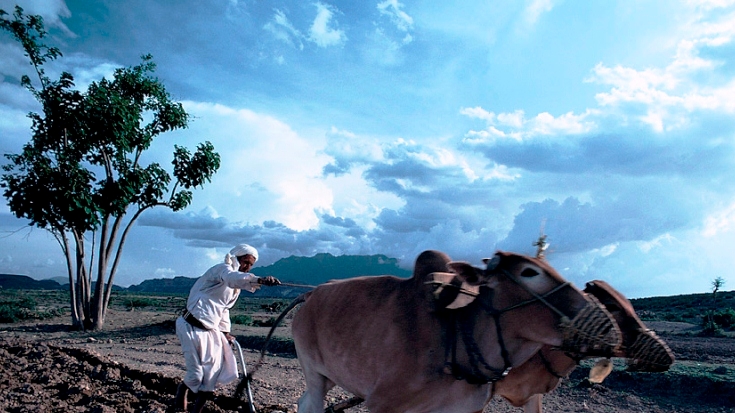Despite being a predominantly rural country—with 68% of its total population living in rural areas—where irrigated agriculture remains the main economic activity, and source of income and employment, Yemen was undergoing a rapid dwindling of its groundwater resources. Per capita availability of water was 115 m3 per year, compared to 1,250 m3 in MNA countries, while the rest of the world relied on an average of 7,500 m3. If nothing was done, this already low water availability would gradually be reduced to an unsustainable 65 m3 per year by 2031. Moreover, farmers had no, or barely any, on-farm water management practices that could help minimize consumption. Therefore, the depletion of groundwater directly impacted poverty, employment and social order.
Solution
The Groundwater and Soil Conservation Project was intended to assist the Government of Yemen (GOY) in promoting groundwater conservation in farming areas, and increasing surface and groundwater availability. The project aimed at improving irrigation water use efficiency, thus increasing farmer returns to water and creating the conditions that would allow farmers to reduce groundwater pumping from aquifers. It also focused on improving recharge and protection of watersheds in order to increase surface and groundwater availability. Another emphasis of the project was on supporting the groundwater management framework and institutions to provide the incentive and capacity to manage local water resources in a sustainable manner.
Results
Many of the farmers assisted by the project have received substantial benefits, which helped to reduce costs and improve yields. Smaller farmers received a higher rate of subsidy, while subsidies for larger farmers were limited by an area ceiling. Besides saving more than 80 million cubic meters (MCM) of groundwater per year, the project investments resulted in significantly improved levels of family incomes for project beneficiaries, increasing from 13.8 to 27% over the previous levels. Additionally, the economic rate of return (ERR) increased from 16.6% at project appraisal to 36.4%. Furthermore, the net present value (NPV) reached Yemeni Rial (YR) 13.7 billion (US$62.3 million) as opposed to YR 2.27 billion at appraisal. The production increase of benefited farms and the reduction in production costs (mainly from the reduction of groundwater pumping by 16%) resulted in a 43% increase of the pumped water productivity (from YR 53 of net value of production per cubic meter of water pumped to YR 76).
Bank Group Contribution
A total amount of US$54.2 million was disbursed out of an IDA credit of US$40.0 million and an Additional IDA credit of US$15.0 million to complete the project. In addition to this, US$1.1 million was provided from Japan Social Development Fund (JSDF) to support three pilot schemes which successfully demonstrated sustainable management of groundwater resoruces by communities.
Partners
The project was implemented by the project coordination unit (PCU) established under the Ministry of Agriculture and Irrigation. Under the PCU, 10 field units were established to carry out day-to-day supervision of the project activities in the selected governorates. Sanaa University participated in the project as an implementing agency for JSDF-funded activities. Through the implementation of this project, the Bank played a leading role in irrigation and water resources management in Yemen and led the discussion of the National Water Sector Strategy and Investment Program with the Government in collaboration with other development partners (GIZ, KfW, Netherlands, and JICA).
Moving Forward
The project was scaled up by additional financing of US$15 million. Moreover, the project was followed by the Water Sector Support Project of US$90 million loan as a nationwide project cofinanced with KfW and the Netherlands.
Beneficiaries
The project promoted bucket type drip irrigation by women for home garden vegetable farming to increase nutrition of poor families. This aspect of the project was later taken up by a United States Agency for International Development (USAID) project. For piped conveyance systems, 94% of farmers reported increased incomes, and 80% reported increased incomes for localized on-farm irrigation systems. On average, farmers saved 46% in pumping costs, 39% in diesel fuel, and 54% in labor. A few farmers—4% for piped conveyance and 9% for localized on-farm irrigation systems—indicated that the project had a positive impact on groundwater levels. In relation to sustainability, farmers have already started maintaining the piped and localized on-farm irrigation systems by themselves. In terms of long term impact, a problem solving partnership has developed with farmers, particularly with regards to the piped conveyance systems. Farmers felt the main benefits were in reduced labor, increased yields, and water savings, with even stronger impacts for the localized on-farm irrigation systems.
